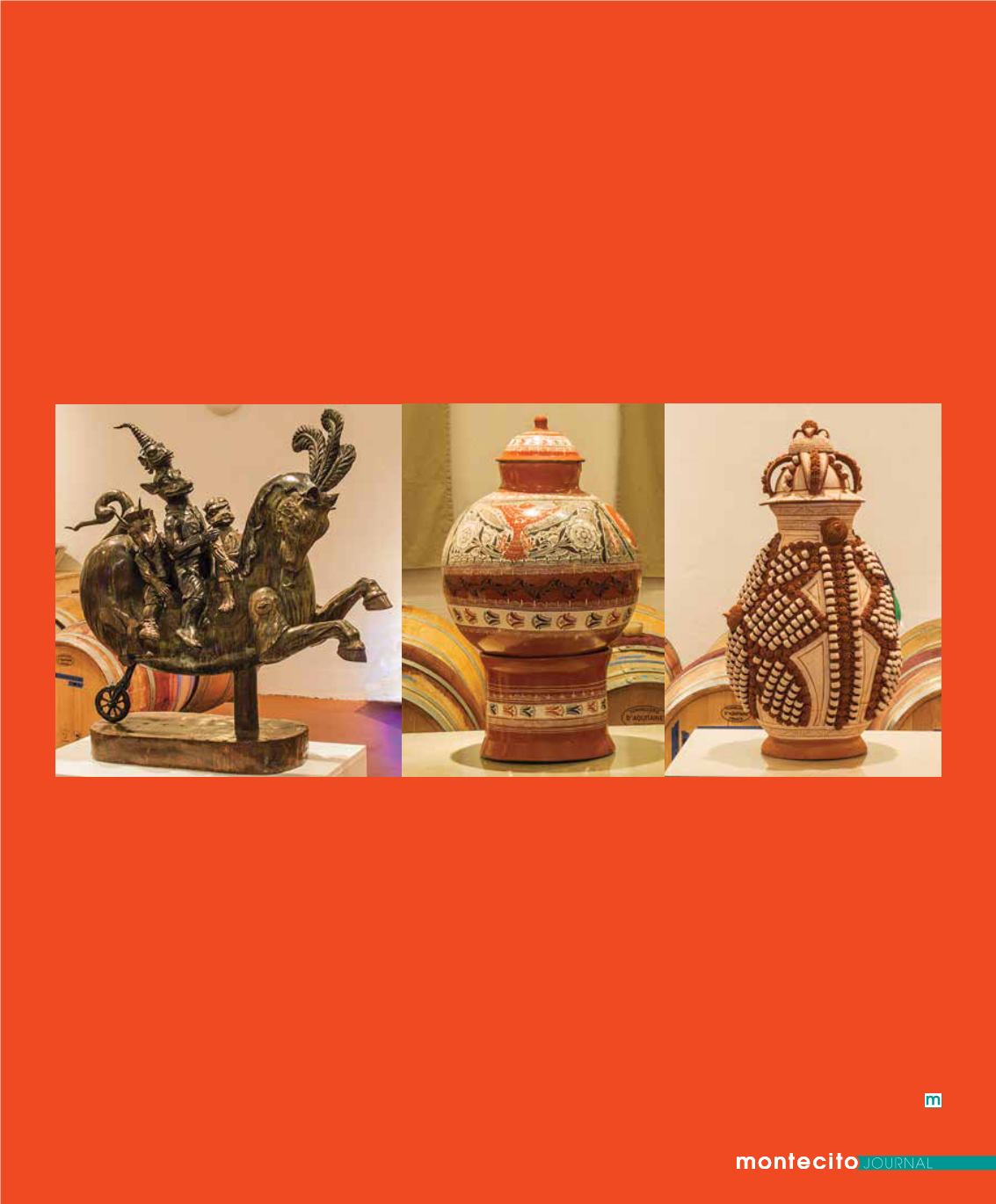
100
winter
|
spring
SELF-TAUGHT ARTISANS
T
he collector has tapped into an exuberant spirit of creativity
among Mexican artisans. A life-size carousel horse in cast bronze
is ridden by fantastic figures with animal faces and six-fingered hands.
There is a beautiful Oaxacan vase of swimming-fish design blackened
from kiln-smoke, then partially burnished with pieces of pyrite to
create mirrored shapes.
A commissioned piece is a brightly festooned cart pulled by oxen.
Its honored passenger? The current pope, a fellow Argentine.
Demonstrating Brander’s view that folk art, like wine, is tied to
An existing 1940s barn with original corrugated roof forms the rear
of the courtyard. The new hacienda structure has thick exterior walls
and 12-foot ceilings, for an environment that is passively heated and
cooled. Painted ceilings of forest green and cerulean blue evoke the
colors of Yucatan buildings, and floors are of Saltillo and Tecate tiles.
The galleries will be open by appointment and for special events.
From Brander’s collection of approximately 300 works, up to 100 at a
time will be on view, with changing installations.
The collector travels to Mexico four times a year. A favorite
museum is Mexico City’s Museo de Arte Popular (MAP). “I have always
been drawn to Mexico for its proximity and my interest in the culture. In
its culture, many of the artisans Brander visits are modest people with
kilns in their backyards. “The whole family is working on the art in this
tradition. Generations upon generations, relying entirely on their art for
their livelihood.”
HACIENDA STYLE
The museum is modeled after a true hacienda style, with three
sides around an open courtyard. From the entrance is a captivating view
of vineyards below. A peacock door pull and mural of whimsical figures
are from Tlaquepaque.
some ways, MAP is an inspiration for my museum.”
He plans to bring artists from Mexico to show their work and
demonstrate how it is made.
“There has been an evolution of thought about Mexico,” Brander
observes. “In the 1940s and 1950s, Mexico City was seen by many
as having the sophistication of New York or Buenos Aires.” In later
decades, “Mexico was considered second-rate in terms of cuisine, quality
beverages, or lifestyle. By opening this museum, I hope to encourage
knowledge of quality Mexican art in the community. I feel there’s a need
for a museum of this kind.”
Gracias, Señor Brander!
ART
+
WINE


